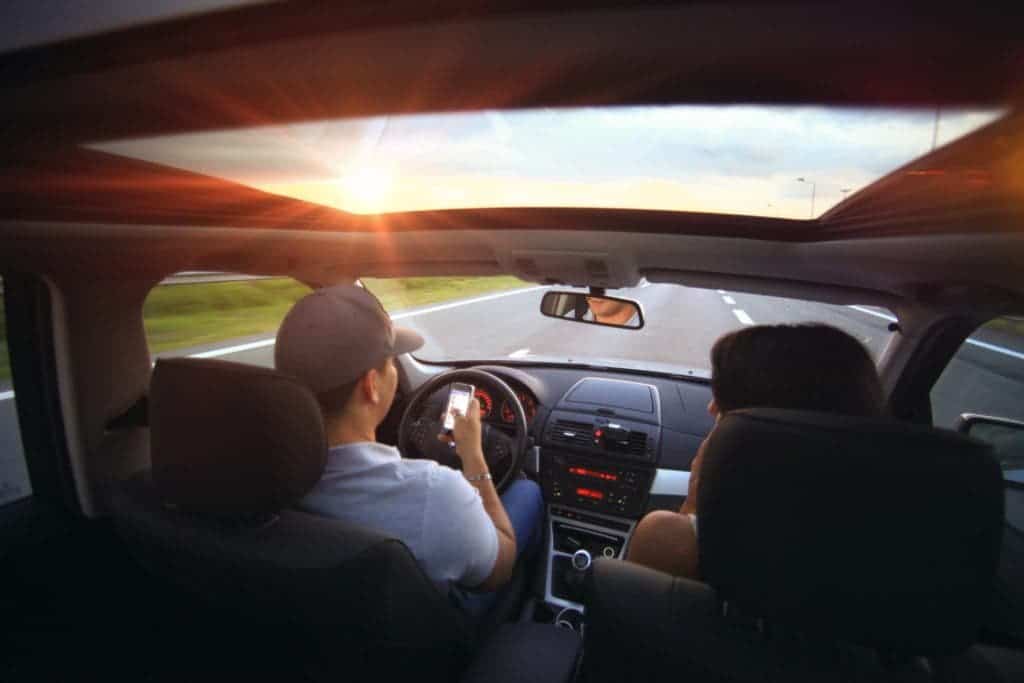A new study reports that teen drivers age 14 years and older had texted while driving at least once in the month prior to the survey,
If there’s one thing you shouldn’t do while driving, it’s texting. No matter how good of a driver you think you are, no matter how well you think you have things under control, driving and texting is extremely dangerous. A recent study from the Virginia Tech Transportation Institute has found that text messaging increases crash risk 23 times compared to drivers that are not distracted. Overall, no fewer than 11% of people aged 18 to 20 who were involved in an automobile accident and survived admitted to writing or receiving a text at the time of the accident. If that still doesn’t scare you — in the US alone, 1.6 million accidents every year involve a smartphone. No matter how you look at it, driving and texting don’t go well together.
Yet here we are.
A new study published in the journal Journal of Adolescent Health found that nearly 2 in 5 American teen drivers age 14 years and older had texted while driving at least once in the month prior to the survey — despite the fact that 34 of 35 states in the study ban text messaging for drivers 21 years and younger.
“The increase in texting while driving at the age when teens can legally begin unsupervised driving was not surprising,” said Motao Zhu, MD, MS, PhD, the study’s lead author and Principal Investigator in the Center for Injury Research and Policy at Nationwide Children’s Hospital. “Graduated driver licensing laws could have an impact on texting while driving behavior: the earlier teens start driving, the earlier they start texting while driving.”
Results were not uniform, however, and the study highlights important differences between states. For instance, the lowest prevalence of texting and driving was 26% in Maryland, while the highest was 64% in South Dakota. Researchers also noted that more teens texted in states with a lower minimum learner’s permit age and in states where a larger percentage of students drove. White teens texted more than all other races/ethnicities.
There were five states where more than 50% of teen drivers reported they’ve texted while driving — and all had a learner’s permit and were aged 15 or younger.
“The increase in texting while driving at the age when teens can legally begin unsupervised driving was not surprising,” said Motao Zhu, MD, MS, PhD, the study’s lead author and Principal Investigator in the Center for Injury Research and Policy at Nationwide Children’s Hospital. “Graduated driver licensing laws could have an impact on texting while driving behavior: the earlier teens start driving, the earlier they start texting while driving.”
The team also found an (expected) correlation between generally risky behavior and driving and texting. For instance, teens who regularly wore their seatbelt were 21% less likely to drive and text compared to those who didn’t. This suggests that being with an adult in the car can improve driving behavior, something which has been proven in the past.
“Risky driving behavior is known to be much less common with an adult in the car,” said Ruth Shults, MPH, PhD, formerly, senior epidemiologist with the CDC’s Division of Unintentional Injury Prevention. “The association between age and texting while driving highlights the need for parents to pay attention to their child’s texting while driving throughout the teen years – not just when their children are learning to drive.”
However, if anything, the study likely underestimates the prevalence of using a smartphone while driving. It specifically asked about “texting and emailing while driving,” but that doesn’t cover the wide range of uses smartphones are used for (which includes calling someone or answering a call, browsing, accessing social media, etc). The researchers also concede two shortcomings of their study: for instance, some teens may not consider writing to someone on social media “texting,” and some may not consider it “driving and texting” if the car is stopped at a red light, for instance. All this would suggest that results are underreported, and potentially more than half of US teens are using their phones while driving.
Considering the sheer number of dangerous driving accidents, this is a concerning issue. Researchers suggest that in the case of teens, parents should first be good role models. If you are a parent sitting by your driving teen, don’t use your phone — even if you are just a passenger. This could make them more prone to using their phones themselves when they’re driving. Putting the phone on silent, or on driving mode, or using an app that disables phone calls and texts while driving could help develop some healthy habits. Lastly, parents should clearly communicate to their kids that texting is simply not allowed when you drive — it’s irresponsible and quite often, illegal.



